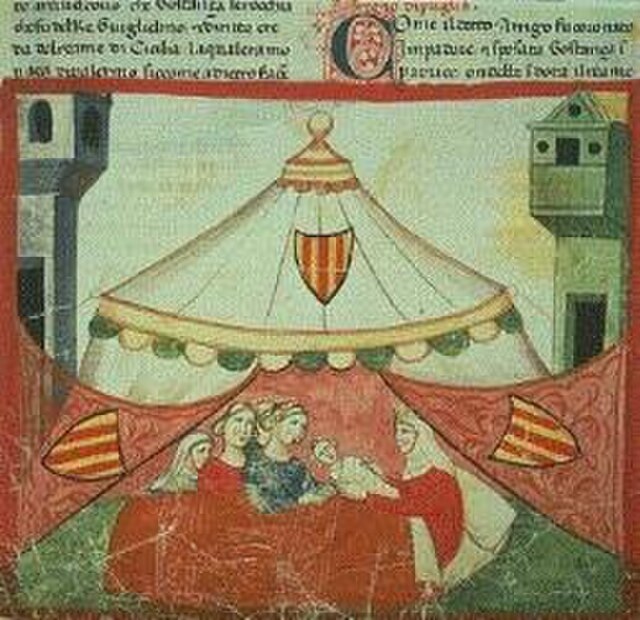Cultural depictions of Frederick II, Holy Roman Emperor
Frederick II, Holy Roman Emperor, also called Stupor mundi, was a notable European ruler who left a controversial political and cultural legacy. Considered by some to be "the most brilliant of medieval German monarchs, and probably of all medieval rulers", and admired for his multifaceted activities in the fields of government building, legislative work, cultural patronage and science, he has also been criticized for his cruelty, and his neglect of Germany in favour of his Sicilian affairs.
Frederick II's statue in Palazzo Reale di Napoli. The sculptor was Emanuele Caggiano (1888).
Frederick the Second enters Constance as Emperor, from Die Gartenlaube (1866)
Castello Svevo di Trani, one of the most remarkable fortifications built by Frederick II
Friedrich II Alpenreise ("Frederick on his Alpine journey") by Josef Matyáš Trenkwald (nineteenth century).
Frederick II, Holy Roman Emperor
Frederick II was King of Sicily from 1198, King of Germany from 1212, King of Italy and Holy Roman Emperor from 1220 and King of Jerusalem from 1225. He was the son of emperor Henry VI of the Hohenstaufen dynasty and Queen Constance of Sicily of the Hauteville dynasty.
A gold augustalis bearing Frederick's effigy. Legend: c(a)esar aug(ustus) imp(erator) rom(anorum)
The birth of Frederick on the market square of Jesi from the Nuova Cronica, Biblioteca Apostolica Vaticana, ms. Chigi L. VIII.296 (cat. XI.8)
Constance handing her son over to the care of the duchess of Spoleto, the wife of Conrad of Urslingen, from the Liber ad honorem Augusti by Peter of Eboli
Seals used by Frederick as Emperor (ed. Otto Posse 1909): 1: first imperial seal (1221–1225), 2: second imperial seal (1226), 3: third imperial seal, addition of the title of King of Jerusalem (1226–1250) 4: seal used in 1221 and 1225, 5: first seal as King of Jerusalem (1233).








